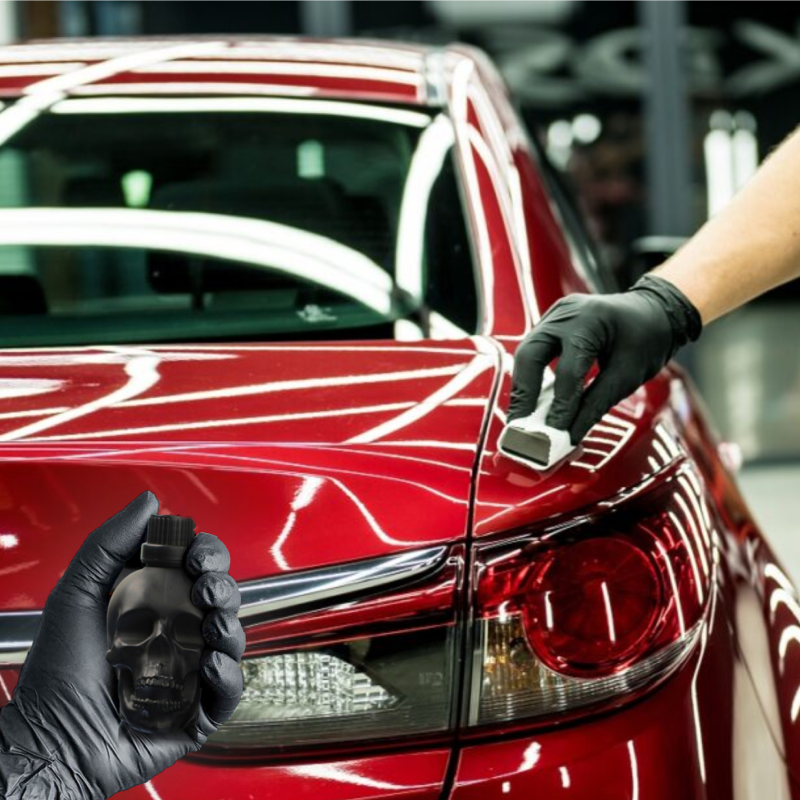Choose premium paint protection film for a invisible layer of protection.
Choose premium paint protection film for a invisible layer of protection.
Blog Article
A Comprehensive Guide to the Kinds of Ceramic Covering on the Market
Ceramic layers have actually arised as a crucial option across various markets due to their special buildings and applications. As we explore the distinctive qualities and applications of these layers, the implications for efficiency and longevity end up being progressively noticeable, increasing inquiries regarding which type may ideal fit your requirements.
Recognizing Ceramic Coatings
Ceramic layers are advanced safety remedies that have gotten appeal in various sectors, especially in automobile and aerospace applications. These finishes contain a liquid polymer that, when cured, develops a durable, hydrophobic layer externally of the substrate. This layer offers enhanced resistance to environmental contaminants, UV radiation, and chemical exposure, consequently extending the life and aesthetic appeal of the underlying material.
The basic component of ceramic finishings is silica, which contributes to their hardness and durability. The application procedure normally entails surface prep work, application of the layer, and healing, which can be attained through warm or UV light. Once treated, ceramic finishings exhibit exceptional bonding properties, permitting them to stick strongly to a selection of surface areas, including metals, plastics, and glass.
In enhancement to their safety attributes, ceramic coverings also use simplicity of upkeep. Their hydrophobic nature lowers the adherence of dust and gunk, making cleansing easier and much less frequent. Generally, the adoption of ceramic finishings stands for a considerable innovation in surface defense technology, giving both functional and aesthetic benefits throughout multiple sectors.
Sorts Of Ceramic Coatings
Various kinds of ceramic layers are offered, each created to meet particular performance demands and applications - Auto Detailing. The most usual types consist of:
Silica-based Coatings: These coatings mainly contain silicon dioxide and are understood for their sturdiness and chemical resistance. They are extensively made use of in automobile and commercial applications.
Titanium Dioxide Coatings: Renowned for their photocatalytic buildings, titanium dioxide coatings are commonly used in atmospheres where self-cleaning and antifungal homes are desirable, such as in building materials and auto finishes.
Zirconia Coatings: Identified by their high-temperature security and thermal resistance, zirconia layers are utilized in applications such as turbine engines and high-performance automotive parts.
Alumina Coatings: Exhibiting exceptional solidity and thermal stability, alumina coverings are often used in wear-resistant applications, including cutting tools and industrial machinery. - Car Detailing
Hybrid Coatings: Combining the homes of numerous materials, crossbreed finishes offer boosted performance qualities, making them suitable for special and demanding applications.
Each sort of ceramic finishing serves unique functions, allowing individuals to select the most suitable option based upon details environmental problems and performance requirements.
Advantages of Ceramic Coatings
Ceramic coatings, in specific, deal many advantages that make them progressively prominent among suppliers and customers alike. These layers are immune to scrapes, chemicals, and UV rays, making sure that the underlying surface continues to be secured over time.
In enhancement to sturdiness, ceramic coatings provide exceptional hydrophobic homes, click permitting for simple cleaning and upkeep. This water-repellent nature decreases the adherence of dust, crud, and various other contaminants, which can prolong the aesthetic allure and functionality of the surface. Moreover, ceramic finishes can substantially improve thermal resistance, making them ideal for applications that endure high temperature levels.

Application Process
When applying ceramic layers, a meticulous approach is vital to accomplish optimum results. A clean surface ensures appropriate bond of the coating.
Once the surface is prepped, the following action is to apply the ceramic finishing. The finishing must be used in thin layers, as thicker applications can lead to unequal finishes.
After application, the layer requires a certain treating time, commonly ranging from a couple of hours to a full day, depending on the item. During this moment, it is important to stay clear of exposure to wetness or contaminants. Finally, a gentle buffing might be needed after treating to boost the gloss and remove any type of high spots. Adhering visit their website to these steps carefully will take full advantage of the efficiency and longevity of the ceramic finish, providing a resilient protective layer for the surface area.
Upkeep and Durability
To make sure the durability and performance of a ceramic covering, routine upkeep is essential. Ceramic coatings, recognized for their longevity and protective qualities, require particular care regimens to maximize their lifespan and performance.
Along with routine washing, periodic examinations are vital. Look for indicators of wear or damages, such as hydrophobic residential or commercial properties lessening or surface imperfections. If essential, a light gloss may be put on rejuvenate the finishing without removing it away.
Moreover, the application of a booster spray can improve the finishing's hydrophobic effects and restore its gloss. This is particularly useful for finishes that have actually been in usage for an extended period. Eventually, by adhering to these visite site maintenance techniques, one can substantially prolong the life of a ceramic finish, making sure that it remains to give ideal defense versus ecological elements and keep the visual allure of the automobile.
Conclusion

Report this page